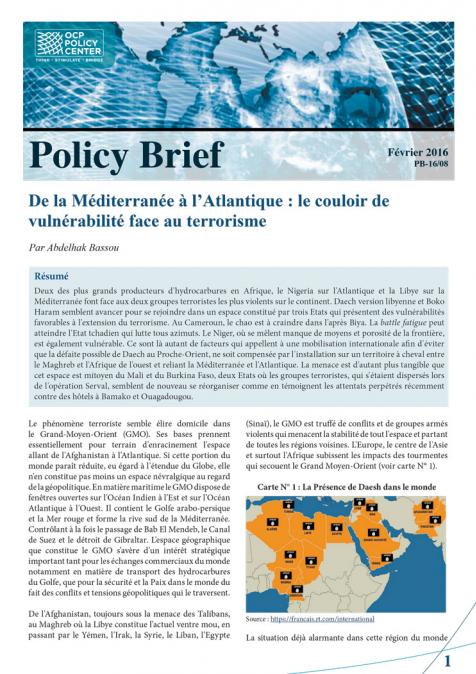RELATED CONTENT
-
Eckart WoertzMarch 08, 2016This podcast is performed by Eckart Woertz. Saudi Arabia's role is pivotal in global oil markets and oil revenues are crucial for its political stability. The talk gives an overview of re ...
-
AuthorsMarch 8, 2016La potasse constitue, avec le phosphate et l’azote, l’un des trois nutriments utilisés dans la fabrication d’engrais. Si les facteurs qui influencent sa demande sont pour la plupart communs aux autres fertilisants et en large partie déterminés par la conjoncture des marchés agricoles, son offre répond quant à elle à des facteurs propres. Longtemps connu pour être contrôlé par deux cartels de production et d’exportation, le marché de la potasse a connu une évolution majeure en 2013 m ...
-
AuthorsMarch 8, 2016Along with phosphorus and nitrogen, potash constitutes one of the three nutrients used in the production of fertilizers. Although the factors that influence its demand are mostly common to other fertilizers and in large part determined by the agricultural market conditions, its supply depends on specific factors. Long known to be controlled by two production and export cartels, the potash market experienced a major change in 2013 with the end of the RussianBelarusian agreement. In a ...
-
Michael LeighMarch 08, 2016This podcast is performed by Michael Leigh. As we enter 2016, Europe's energy situation will face many political and security challenges. Sir Michael Leigh will review in this presentatio ...
-
AuthorsZouhair Aït BenhamouMarch 2, 2016Discrepancies in output fluctuations between emerging and developed economies are well documented in the literature. Differences however within developing economies have not been sufficiently scrutinised. This paper argues that global and regional shocks primarily drive the business cycle in emerging economies, and provides estimated results for cycle variance decomposition. The paper also offers a theoretical framework to check on the set of stylized facts common and specific to em ...
-
Carole MathieuMarch 01, 2016Ce podcast est délivré par Carole Mathieu. A sa clôture le 12 décembre 2015, la COP21 a été saluée comme un grand succès diplomatique. En adoptant l’accord de Paris, les 196 Parties à la ...
-
February 25, 2016...
-
AuthorsFebruary 23, 2016Deux des plus grands producteurs d'hydrocarbures en Afrique, le Nigeria sur l'Atlantique et la Libye sur la Méditerranée font face aux deux groupes terroristes les plus violents sur le continent. Daech version libyenne et Boko Haram semblent avancer pour se rejoindre dans un espace constitué par trois Etats qui présentent des vulnérabilités favorables à l'extension du terrorisme. Au Cameroun, le chao est à craindre dans l'après Biya. La battle fatigue peut atteindre l'Etat tchadien ...
-
AuthorsFebruary 23, 2016Two of the largest oil producers in Africa, Nigeria on the Atlantic and Libya on the Mediterranean are facing the two most violent terrorist groups on the continent. The Libyan version of Daesh and Boko Haram seem to be gaining ground to join in an area formed by three states that are vulnerable to the spread of terrorism. In Cameroon, the chaos is a concern post-Biya. Battle fatigue may reach the Chadian state that has been involved in an all-out battle. Niger, which is limited by ...
-
Eduard SolerFebruary 23, 2016This podcast is performed by Eduard Soler. This webinar will analyze the results of the 20D elections, drawing scenarios of potential impacts for Spanish foreign policy in terms of priori ...








